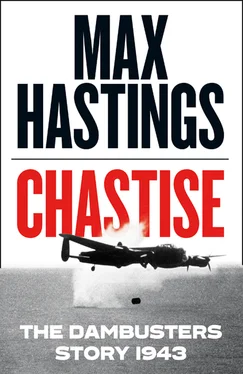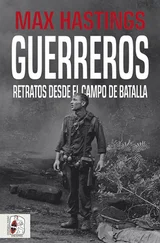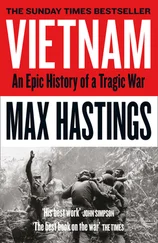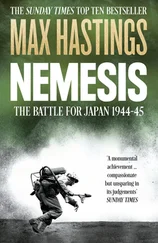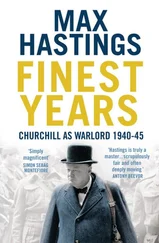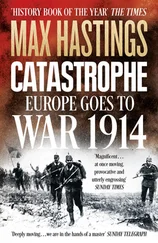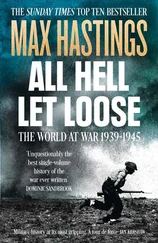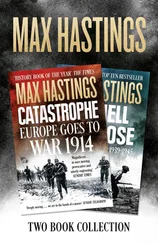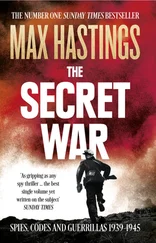WAAF intelligence officer Fay Gillon with survivors of the raid, including Maltby, Munro, Trevor-Roper and Shannon. (Fay Gillon)
King George VI at Scampton, with Gibson and Whitworth. (CNP Collection/Alamy)
Some of the survivors of the raid: Sutherland, Kellow, O’Brien, Hobday, Johnson, Knight, Grayston.
Fred Tees, sole survivor of C-Charlie’s crash. (Tees family)
Letter from Gibson to Tees’s mother, informing her that her son is missing in action. (Tees family)
Flooding in Neheim after the raid. (Werner Buehner)
Victims of the flood in Fröndenberg.
Women attempting to salvage household goods after the Möhnekatastrophe .
Albert Speer assessing the damage at the Möhne. (akg-images/Alamy)
Reconstruction work on the Möhne. (Werner Buehner)
Harris with his wife and daughter after the war. (Imperial War Museum)
Barnes Wallis at Teddington during the filming of The Dam Busters . (SWNS)
Wallis with Michael Redgrave, who played him in The Dam Busters . (Pictorial Press Ltd/Alamy)
Boffin/bofin/n. chiefly Br. informal , a scientific expert; esp. one involved in technological research [origin unknown]
Longman’s Dictionary of the English Language
‘It is proposed to use this weapon … against a large dam in Germany which, if breached, will have serious consequences in the neighbouring industrial area … The operation … will not, it is thought, prove particularly dangerous, but it will undoubtedly require skilled crews … Some training will no doubt be necessary.’
Air Vice-Marshal Robert Oxland, Bomber Command HQ, to Air Vice-Marshal Ralph Cochrane, AOC 5 Group, on 17 March 1943
‘One thing,’ said Dim, ‘if we do go and attack … one of us might possibly get a posthumous VC.’
‘Who wants that?’ said Taffy.
‘Not me,’ said one of the boys. ‘All I want is a Peace and Victory Medal.’
Most of us agreed.
Guy Gibson, Enemy Coast Ahead
After Hollywood mogul Daryl Zanuck was shown the movie The Dam Busters in 1955, he demanded disbelievingly, ‘Is that a true story?’ Yes, he was told. ‘Then why doesn’t it say so?’
RAF Ranks and Army Equivalents
Marshal of the RAF – Field-Marshal
Air Chief Marshal (ACM) – General
Air Marshal (AM) – Lieutenant-General
Air Vice-Marshal (AVM) – Major-General
Air Commodore (A/C) – Brigadier
Group-Captain (Gp. Capt.) – Colonel
Wing-Commander (W/Cdr.) – Lieutenant-Colonel
Squadron-Leader (S/Ldr.) – Major
Flight-Lieutenant (F/Lt.) – Captain
Flying Officer (F/O) – Lieutenant
Pilot Officer (P/O) – Subaltern
Flight-Sergeant (F/Sgt.) – Warrant Officer
Sergeant (Sgt.) – Sergeant
Corporal (Cpl.) – Corporal
Leading Aircraftman (LAC) – Lance-Corporal
Aircraftman (AC) – Private
Air Officer Commanding (AOC)
Ranks attributed to personnel mentioned in the text are those held at the time of incidents or conversations described.
Abbreviations Used in the Text
AOC – Air Officer Commanding
ATS – Auxiliary Territorial Service; women’s branch of the army
CAS – Chief of the Air Staff; head of the RAF
C-in-C – Commander-in-Chief
CO – Squadron commanding officer
Gee – Electronic navigation aid, detecting a grid of radio signals transmitted from the UK, fitted to all Bomber Command aircraft but jammed by the Germans over continental Europe
HCU – Heavy Conversion Unit
IFF – Identification Friend or Foe: electronic radar-pulse identification device fitted to all British aircraft
MAP – Ministry of Aircraft Production
MEW – Ministry of Economic Warfare
OTU – Operational Training Unit
RAAF – Royal Australian Air Force
RAFVR – Royal Air Force Volunteer Reserve
RCAF – Royal Canadian Air Force
RNZAF – Royal New Zealand Air Force
SASO – Senior Air Staff Officer; comparable to an army or divisional commander’s chief of staff
USAAF – United States Army Air Force
WAAF – Women’s Auxiliary Air Force; thus a woman serving at an RAF station would be described as a ‘Waaf’
w/op – Wireless-operator
Narrative of operations uses a twenty-four-hour clock, while the twelve-hour civilian clock is used for other timings.
Bomber Command in February 1943 comprised around two thousand aircraft including trainers – the number varied daily, and significantly fewer were immediately serviceable – of which six hundred were ‘heavies’. Each of seven operational Groups was commanded by an air vice-marshal, and contained variously five to ten squadrons. A squadron was composed of eighteen to twenty-four aircraft, confusingly led by a wing-commander, and subdivided into two or three flights, each commanded by a squadron-leader.
There were dams; a dog with an embarrassing name; a movie; a march composed by Eric Coates. These memories of Operation Chastise, the ‘bouncing bomb’ attack which burst open north-western Germany’s Möhne and Eder reservoirs on the night of 16/17 May 1943, cling to the consciousness of millions of people of all ages, both sexes and many nations, who may know little else about the Second World War. Wing-Commander Guy Gibson’s biographer Richard Morris has written: ‘The story of 617 Squadron’s breaching of the dams has joined that group of historically-based tales – like King Arthur, or Robin Hood – which defy all efforts at scholarly revision.’
Much that we think we know is wrong. Those of us who read Paul Brickhill’s 1951 book, then watched its 1955 screen progeny, the most popular British war film of all time, should blush to remember that we embraced The Dam Busters with special enthusiasm because the raid seemed victimless, save for the fifty-three dead among the gallant young men who carried it out. In truth, however, something approaching 1,400 people – almost all civilians and more than half French, Polish, Russian and Ukrainian mostly female slaves of Hitler – perished in the Möhnekatastrophe , as modern Germans call it; more than in any previous RAF attack on the Reich. That tragic outcome deserves emphasis, alongside our awe at 617 Squadron’s achievement. It is fascinating that Guy Gibson afterwards reflected uneasily about this, as his superiors never did, writing in 1944: ‘The fact that people … might drown had not occurred to us. But we hoped that the dam wardens would warn those living below in time, even if they were Germans. No one likes mass slaughter and we did not like being the authors of it. Besides, it brought us in line with Himmler and his boys.’
This book represents an emotional journey from my own childhood; from the day when, at boarding school, I first thrilled to Richard Todd’s portrayal of the twenty-four-year-old Gibson, who led 617 Squadron on that fateful May night. Many legendary feats of courage have been performed by warriors who clung to some bleeding piece of earth: the Three Hundred at Thermopylae; Horatius on the bridge before Rome; the Guards’ defence of Hougoumont at Waterloo; Joshua Lawrence Chamberlain’s 20th Maine on Little Round Top at Gettysburg; B Company of the 24th Foot holding Rorke’s Drift.
By contrast, the deed attempted in May 1943 by 130 British, Canadian, and Australian airmen, together with a single American and two New Zealanders, required qualities of a different order. Almost all were of an age with modern gap-year adolescents, or students at university. They embarked in cold blood on a mission that many recognised was likely to kill them, and that would require exceptional courage, skill and luck to succeed. They lifted their big, clumsy bombers from the tranquillity of a summer evening in the midst of the Lincolnshire countryside, barely four decades after the Wright brothers initiated heavier-than-air flight. For two and a half hours they raced through the moonlit sky towards Germany, at a height that made power cables as deadly a menace as anti-aircraft fire. They then attacked Hitler’s dams, flying straight and level at 220 mph, much lower than the treetops and less than a cricket pitch’s length from the lakes below, to unleash revolutionary four-and-a-half-ton weapons created by the brilliance and persistence of Barnes Wallis, a largely self-taught engineer. Half of 617’s aircraft which got as far as Germany failed to return, but two of the biggest man-made structures in the world collapsed into mud and rubble, releasing hundreds of millions of tons of water upon the Reich.
Читать дальше
